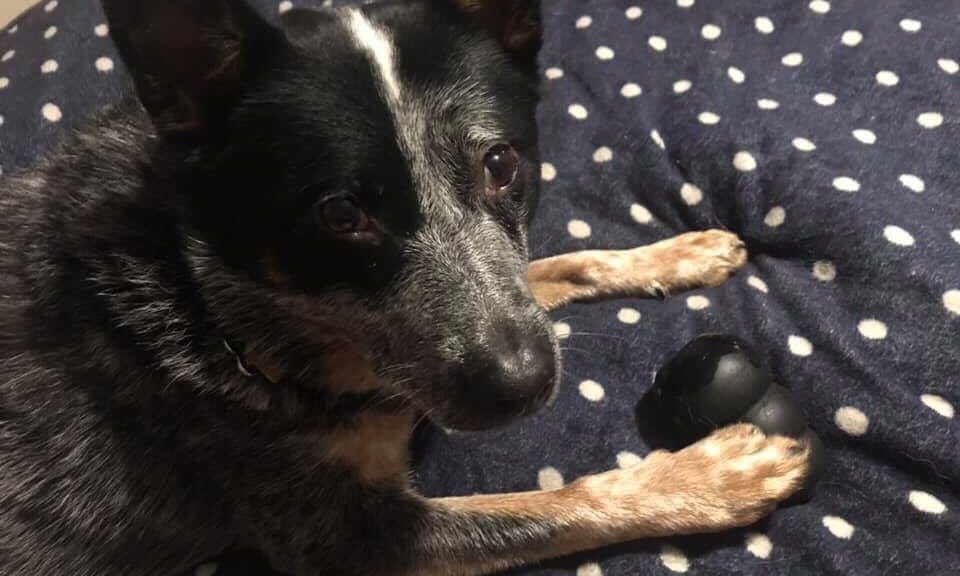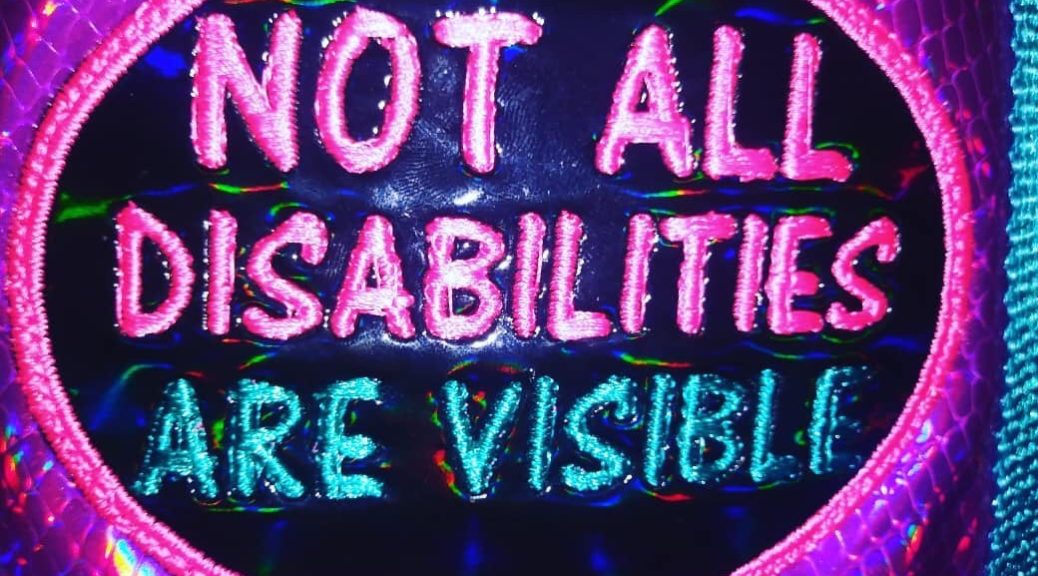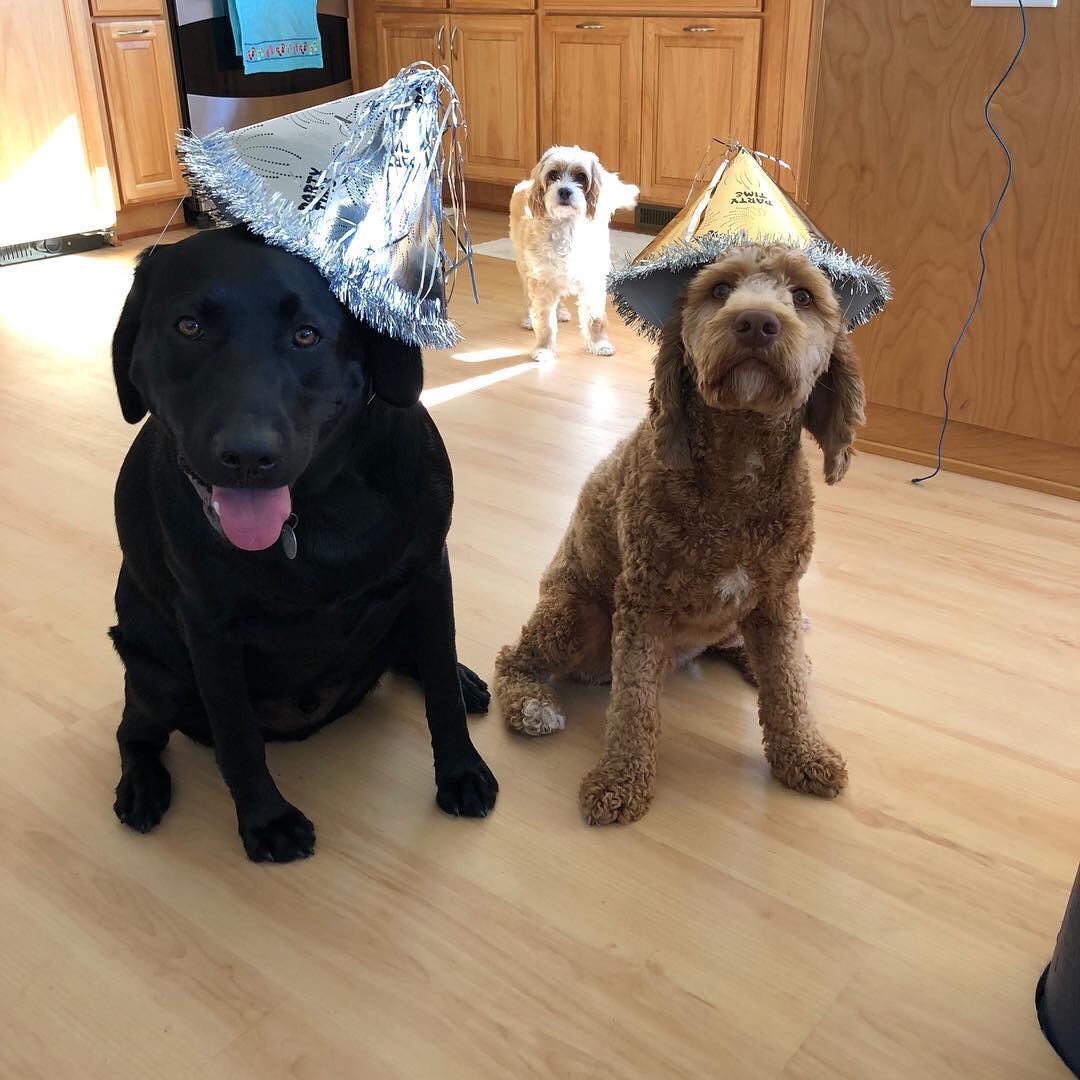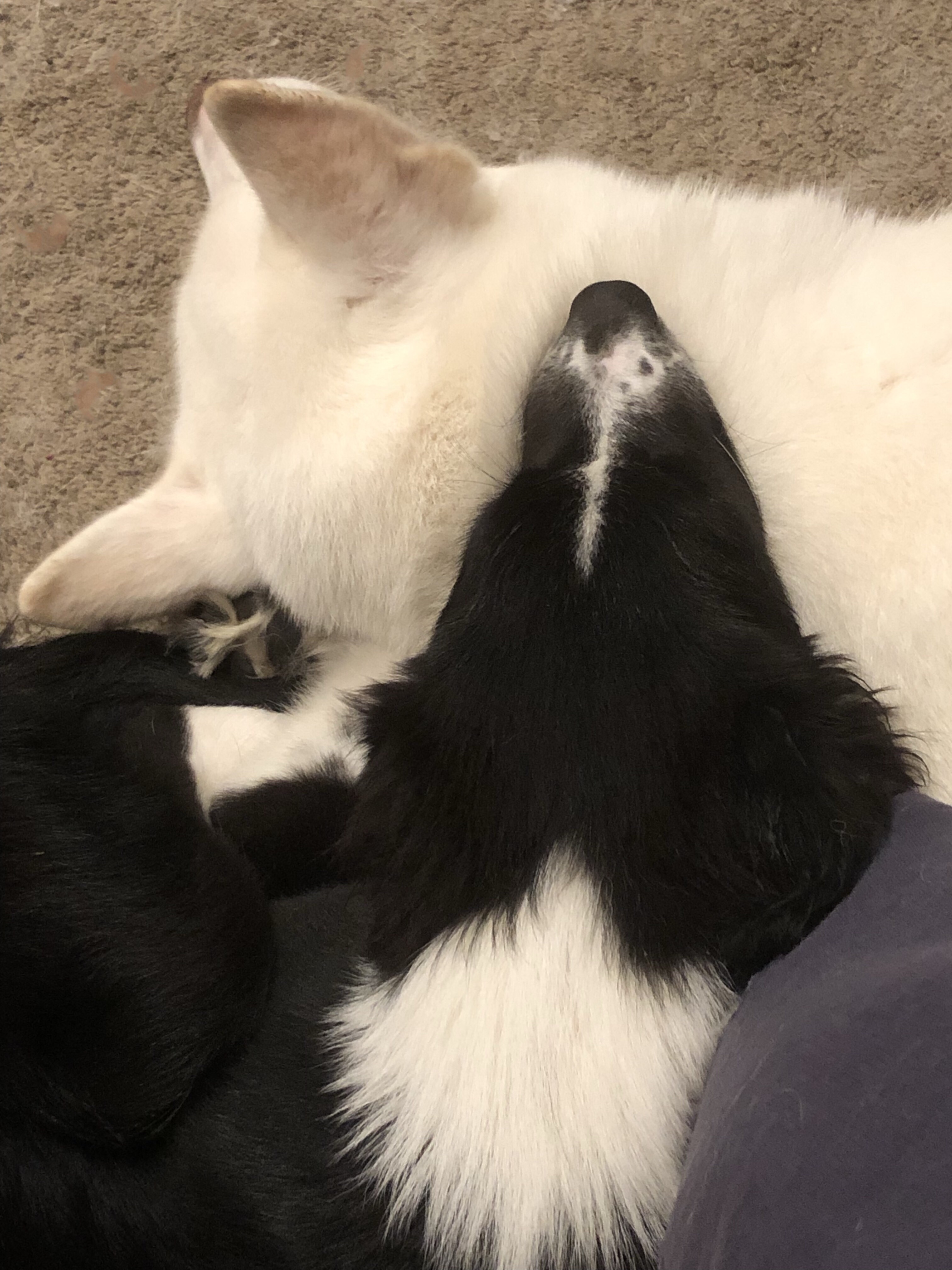A tool that I often use and highly recommend is the classic Kong toy. They have different durabilities for different types of bites that’ll be chomping on them. (Side Note: If Biteforce is interesting to you? Check THIS out!) They have puppy Kongs, regular, medium, tough, and mega tough! If you have a big chewer – get the tougher ones! They are color-coded as well, to make them easily findable in a lineup.
I always kept several black “Mega Chewer” Kongs around for my previous, 100lb dogs. It took a bit for them as puppies to really get into using them, but once they learned what they were, it was something they got multiple times a week!
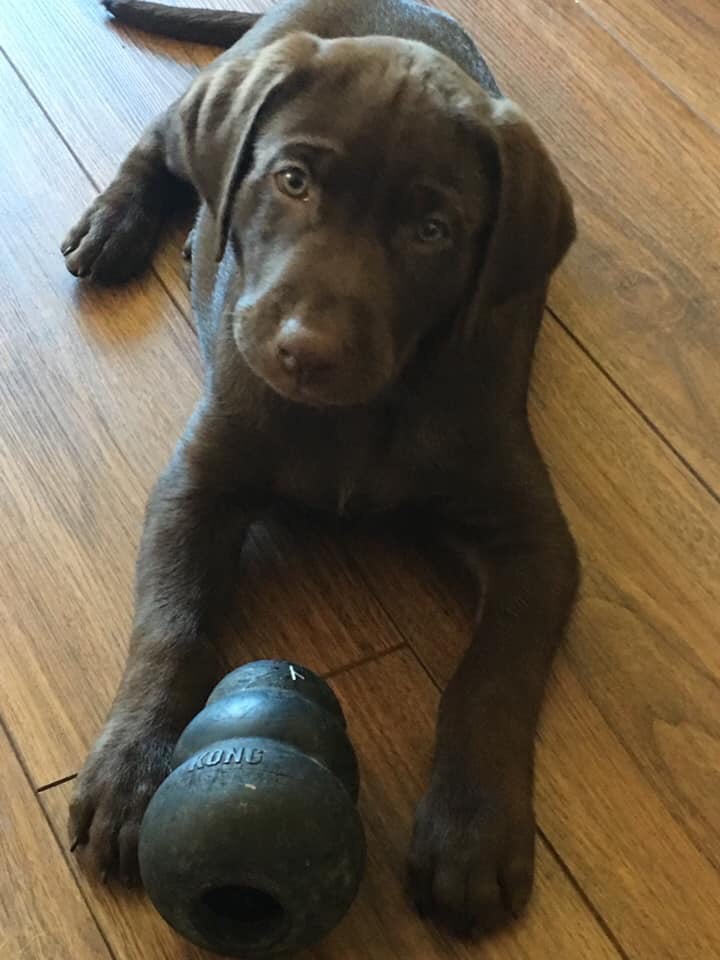
Kongs can be a life-saver on the ears (barkers), on your furniture (destructive chewers), can ease anxiety, and keep a bored puppy busy for a while! They are a great tool and toy that I think every doggy household should have several, of. I like to keep 2-3 per dog, especially puppies, so that way one is being used, one is soaking, and the other is ready to go!
Filling them with something tasty is just as important as the toy itself. That’s what gets them to find interest in the first place, it also provides added enrichment to their lives. Sure, peanut butter is a good idea and easy to do, but don’t you think variety is more fun? Keep them guessing! Not only are these recipes full of different tastes and textures, your dogs will also be getting added nutrients too!
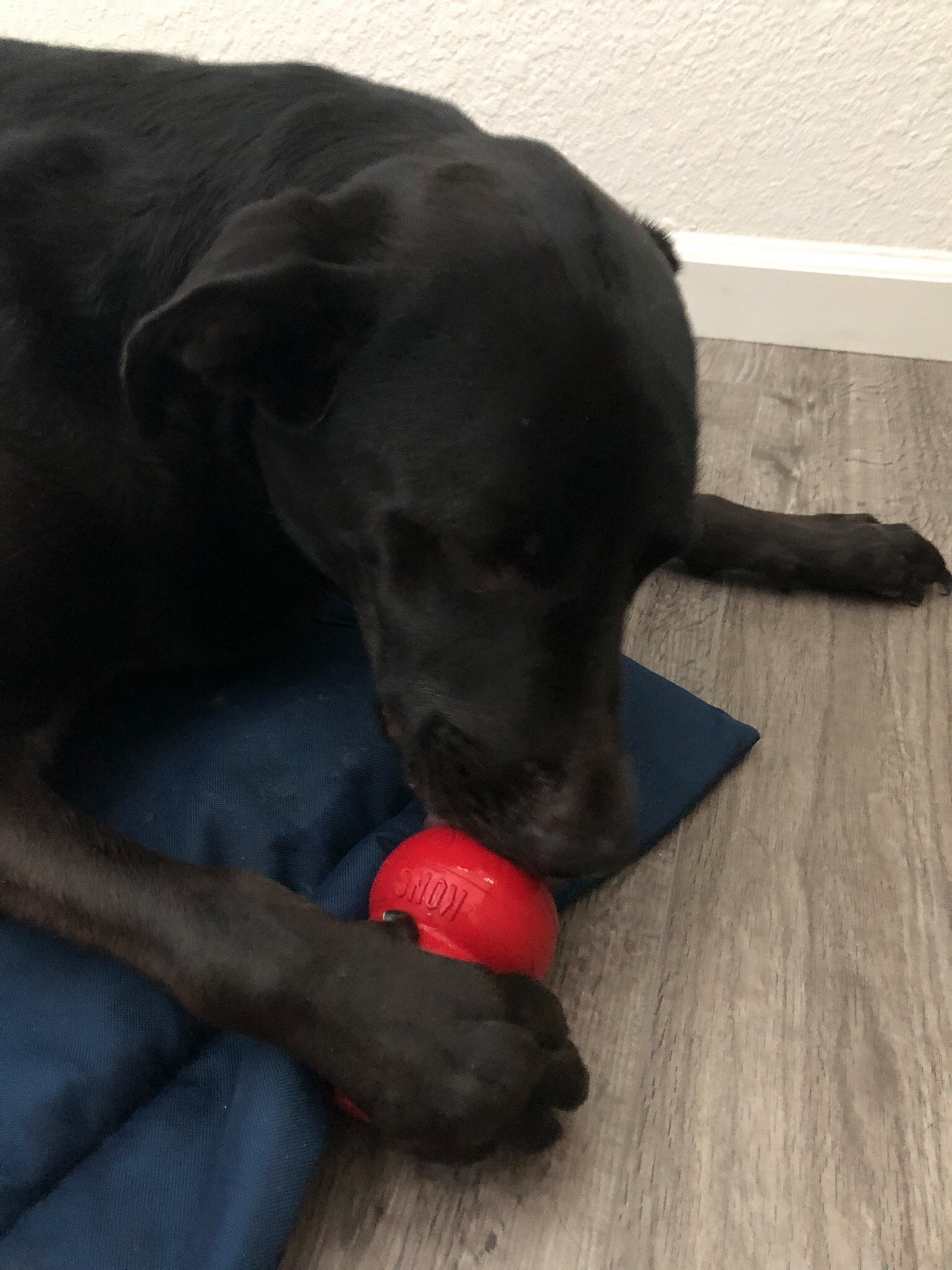
Just like children, dogs will have likes and dislikes. Some dogs love broccoli where others can’t stand it. I have even known dogs who would refuse steak! My advice is to start small. Don’t make a huge batch of anything until you know your dog will enjoy it, and not have any tummy issues with it. Ease into anything new you give your dog, and if your dog has any medical issues please ask your vet before you attempt to give them anything new to ensure it won’t conflict with their health.
If you use Peanut Butter, please only use *Natural* Peanut Butter. Ingredients should read: Peanuts and Salt. That’s it. There are several brands out there that are in your normal grocery stores that carry Natural Peanut Butter. The other brands that have additives put ingredients such as sugars or flavorings, and xylitol which are not good for your dog to consume.
All of these recipes can be given either blended up to a thick milkshake or oatmeal consistency, or sliced and stirred up together like a “fruit salad”. If it’s too moist or liquidy, it can make a real big mess once thawed. Thicker is better. Mix and Match them however you like – get creative! It’s about enrichment and fun. Most recipes are allergy-friendly.
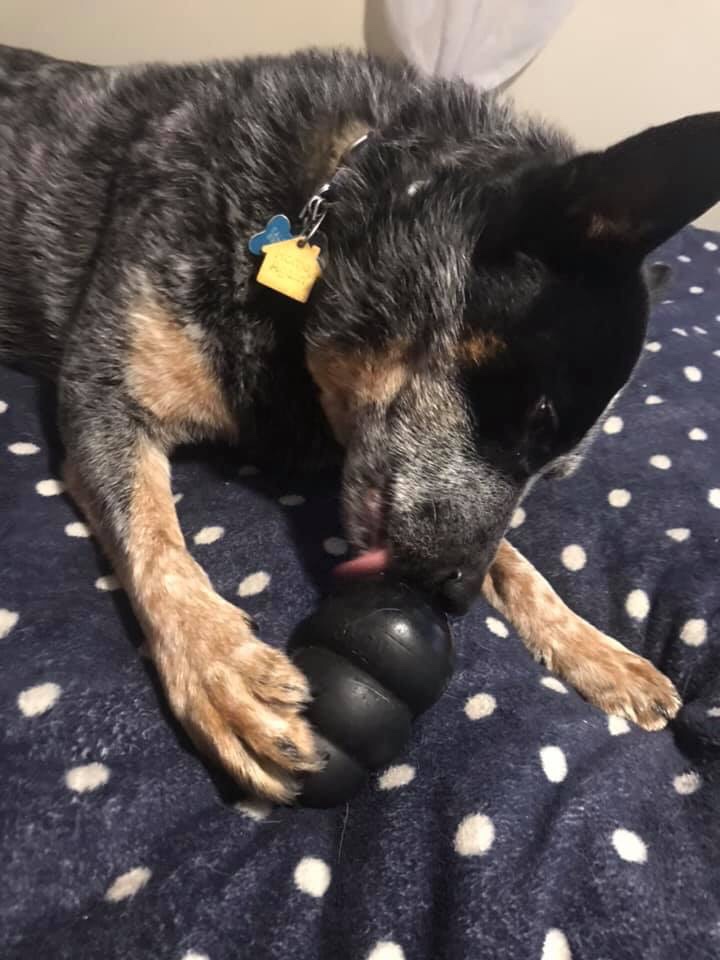
Begin by giving ¼ cup – ½ cup, depending on the size of the dog. Keep in mind how much you are giving them – the calories will add up! I also recommend throwing it in the freezer for at least 6 hours to solidify, that way it can last longer for your dog.
You can add: treats, kibble, meat pieces to any of these. Either top with them or hide in the mixture as little “easter eggs” for your pupper to find.
Yes, I named them all after dogs I’ve known and worked with.
1. Autumn’s Harvest Snack
-Pumpkin Puree
-Mashed Sweet Potato
-Plain Greek Yogurt
-Diced Carrots
-Kibble bits
2. Baby’s Healthy Start
-Applesauce
-Cooked Rice
-Shredded Chicken
-Blueberries
3. Little Monster’s Nibbles
-Cooked Rice
-Chicken Broth
-Mashed Sweet Potato
-Peas & Carrots Mix
4. Kaylee’s Delight
-Plain Greek Yogurt
-Diced Apple
-Rolled Oats
-Shredded Chicken
5. Harley’s Go-To
-Cheese
-Pumpkin Puree
-Carrots
-Diced Apple
-Shredded Chicken
6. Zhadie’s Fave
-Sliced Strawberries
-Chicken Broth
-Cooked Rice
-Plain Greek Yogurt
-Rolled Oats
7. Cocoa’s Shake
-Blueberries
-Applesauce
-Diced Carrots
-Plain Greek Yogurt
8. Love, Rosie & Charlie
-Cooked Rice
-Green Beans
-Cranberries
-Apple Chunks
-Capelin Whole Fish (treats)
9. Preferred By Tobi
-Pumpkin Puree
-Apple Slices
-Shredded Chicken
-Cooked Rice
10. Penyo’s Plate
-Cooked Rice
-Steak Strips
-Green Beans
-Mashed Sweet Potato
11. Only For Prince
-Crunchy Peanut Butter
-Blueberries
-Kibble
-Shredded Chicken
-Applesauce
12. Shadow’s Delight
-Mashed Banana
-Peanut Butter
-Shredded Chicken
-Peas & Carrots
13. Remy’s BurgerHead Special
-Ground Beef Patty (plain)
-Cubed Cheese
-Strawberry Slices
-Pumpkin Purée
Happy Snacking! 🐶
Published by Amy Noble on 8/14/19
Amy is an Animal Behaviorist and Dog Trainer in Monterey, Ca, with over Thirty years of experience and active knowledge working with animals. Amy’s love for every dog, cat, horse, rabbit, human (and more!) that she trains truly shows in her work and dedication.

